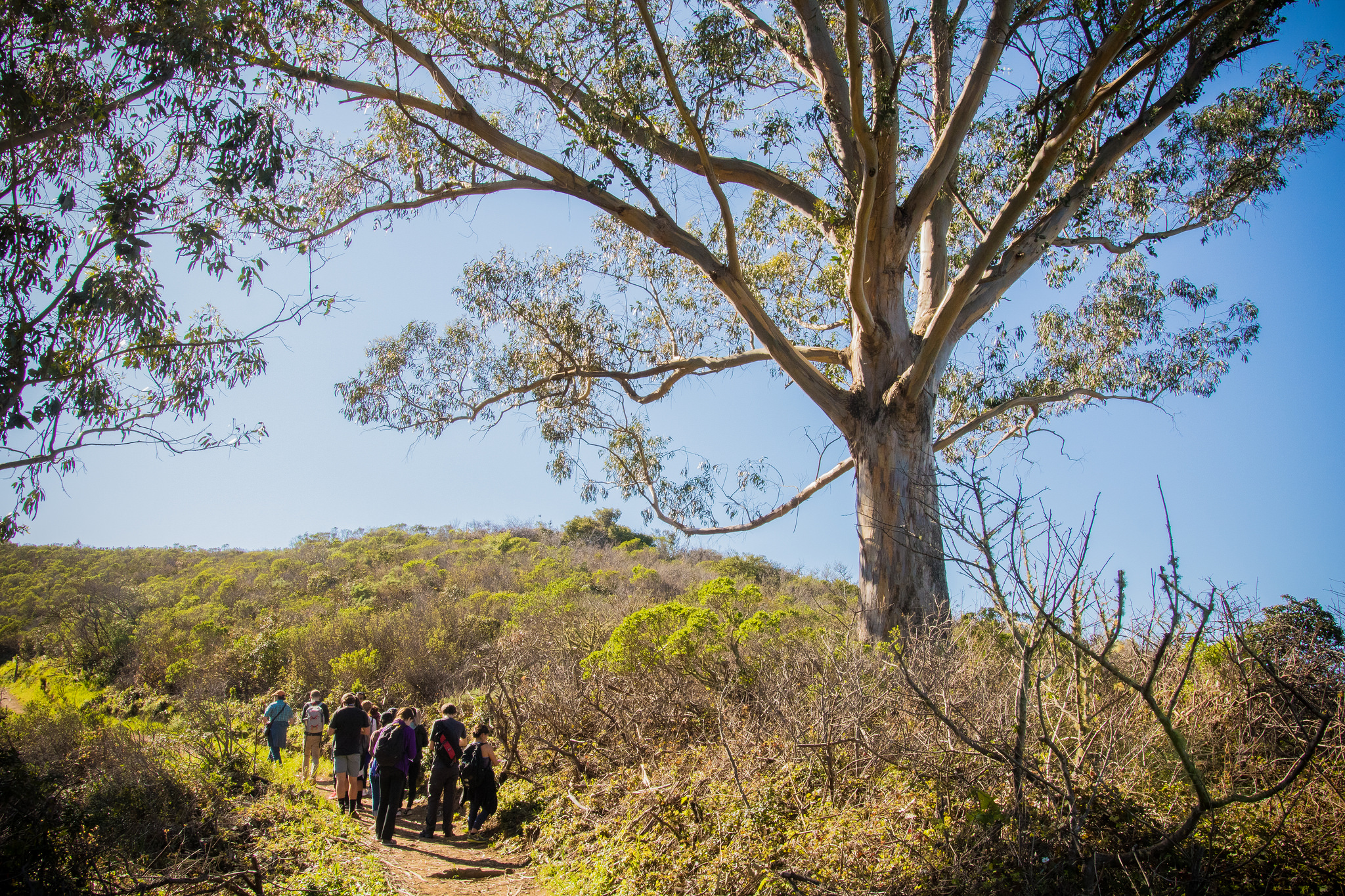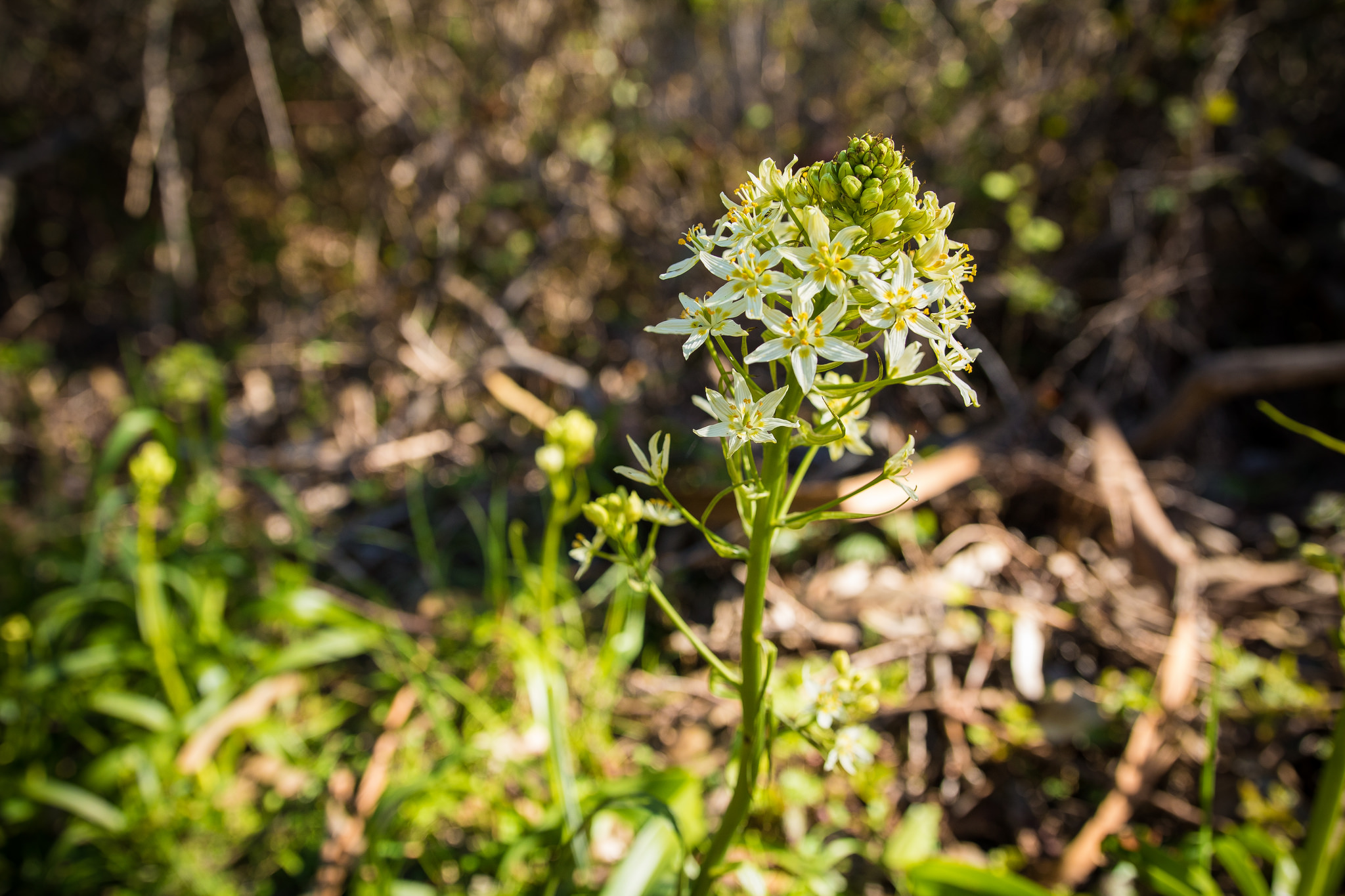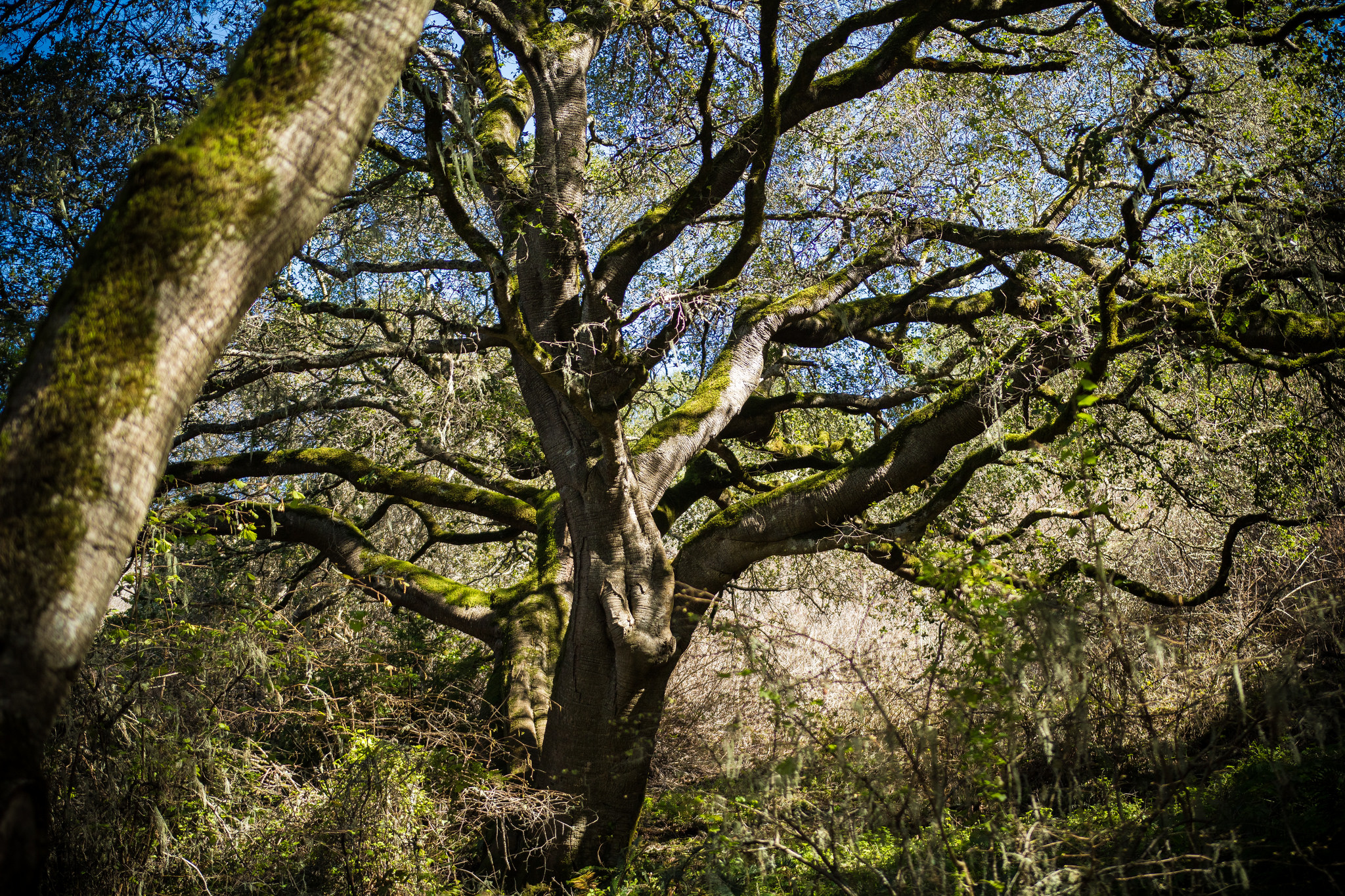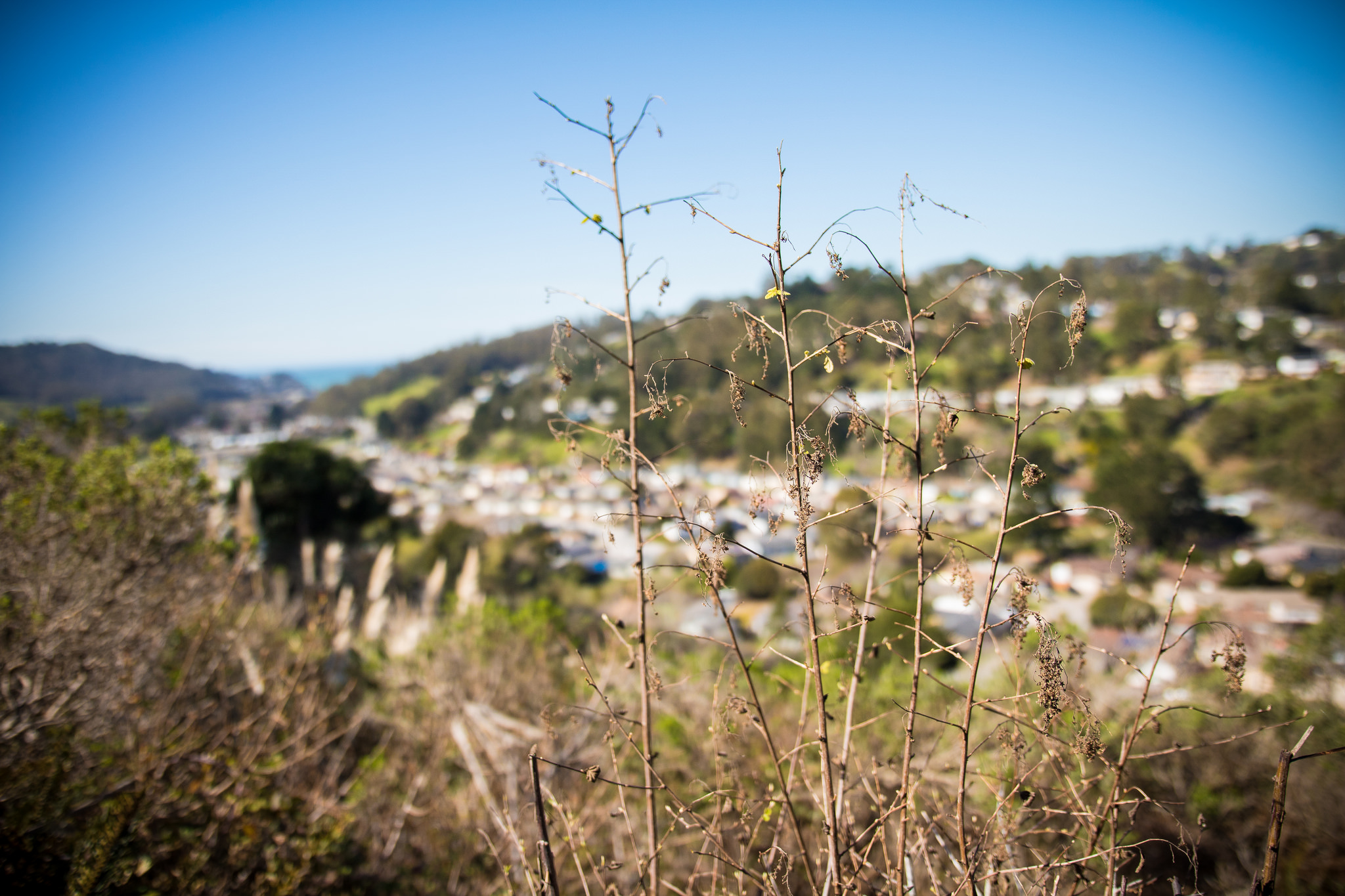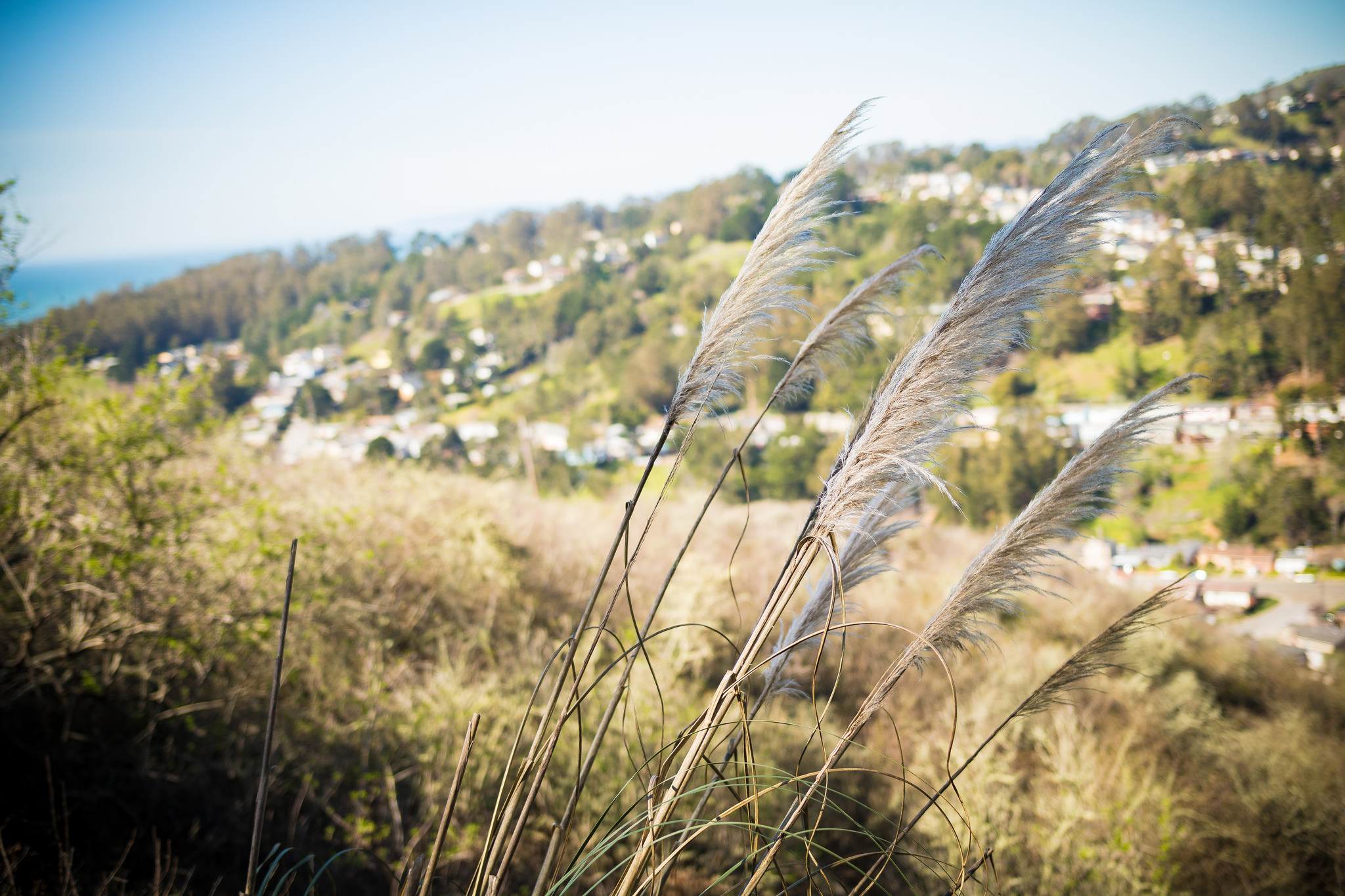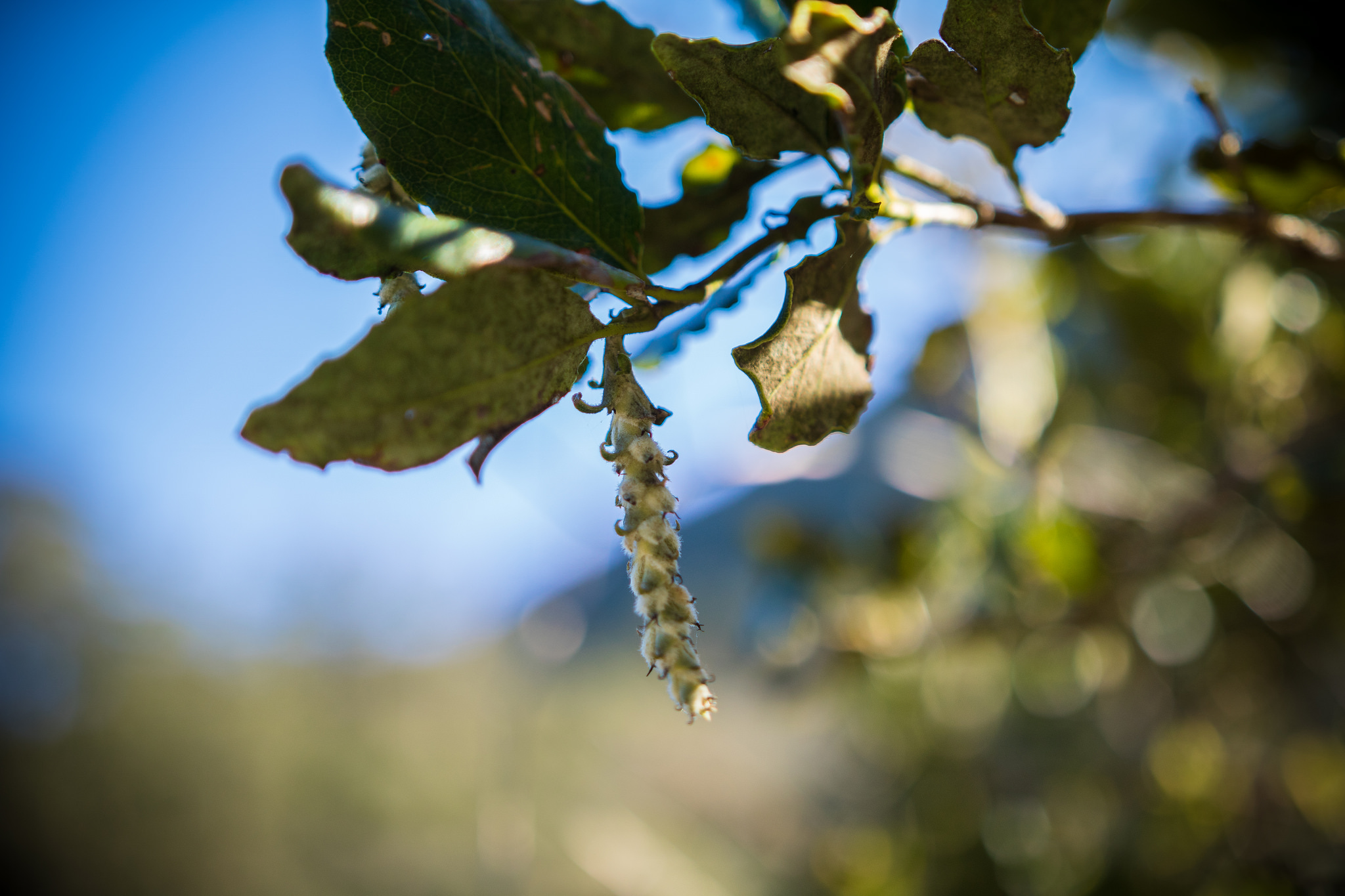Date: 3/2/2017
Location: San Pedro Valley County Park (37.578450, -122.475945) – Elevation: ~160 ft
Site Description: San Pedro Valley County Park, located near the foothills of Pacifica, was the site of our third field excursion. This park had multiple streams and creeks, which most likely play a significant role in ushering in flora that have adapted to moist environments such as Arroyo Willow and Giant Trillium. Thick coastal scrub was found in abundance around the route we navigated through – as per usual, another dirt path. Mountain lions have also been located around the site (although great that we didn’t run into any!)
Species Description:
1) Salix lasiolepsis (Family: Salicaceae), or known by its common name the Arroyo Willow, was the first species we encountered during our excursion. Its most prominent feature is its green/yellow catkins (photo below), which are how willow flowers are generally arranged. This is a deciduous large shrub that possesses leaves with tiny dentations. Willows themselves are usually found close to water (this one was found close to a stream). Also, a cool thing I didn’t know about this species is that acetylsalicylic acid (aspirin), can be derived from willow bark.

The trunk of a Salix lasiolepis (Family: Salicaceae), or the Arroyo Willow peaking through the branches
2) Toxicoscordion fremontii (Family: Melanthiaceae), known by its common name the “Star Lily” was another peculiar fellow we ran into. Some morphological features to note are that it stigma is broken into 3 parts and its yellow anthers. In addition, it grow generally with a spherical bulb shape, and its flowers grow in clusters, possessing 6 petals arranged symmetrically (hence, named the star lily). Finally, as one could tell from its genus and species name, the Star Lily is toxic and should NOT be ingested!
3) Chrysolepsis chrysophylla (Family: Fagaceae), or the “Golden chinaquapin” was another familiar species we had run into previously, but we hadn’t had the chance to get up-and-close to. As expected, this is a rare species that was protected by thick Coastal scrub. Its most distinguishable feature are the golden underside of its leaves, which are simple and entire.

Chrysolepsis chrysophylla (Family: Fagaceae), or the Golden chinquapin can be easily distinguished by observing its yellow underside
Narrative: We had originally planned on a different site but after the scouting mission and the floral prognosis did not bode well, we switched to San Pedro Valley. After arriving to the site and parking our cars, we started off our excursion with some great weather (again!). Our route through the Park consisted of yet another dirt path that took us deeper in into the park as we climbed higher and higher. As per usual, we ran into many species of interest along the route – some old and some new. Along the way, we ran into many familiar genera we had encountered previously including Ribes, Arbutus menziesii, and many others!
Once we ascended to the height of the Park, we were greeted with some awesome views as per usual. At this point, we started to descend deeper into the valley where we greeted by much of the same terrain that we had encountered previously. One of the highlights of the trip was seeing the overflowing waterfall at a distant – a sign that we California had received its fill of water (maybe a bit tad much?). At any rate, it was all downhill from there, with us arriving back at the cars early and subsequently arriving back at school ahead of time!
More Photos!

